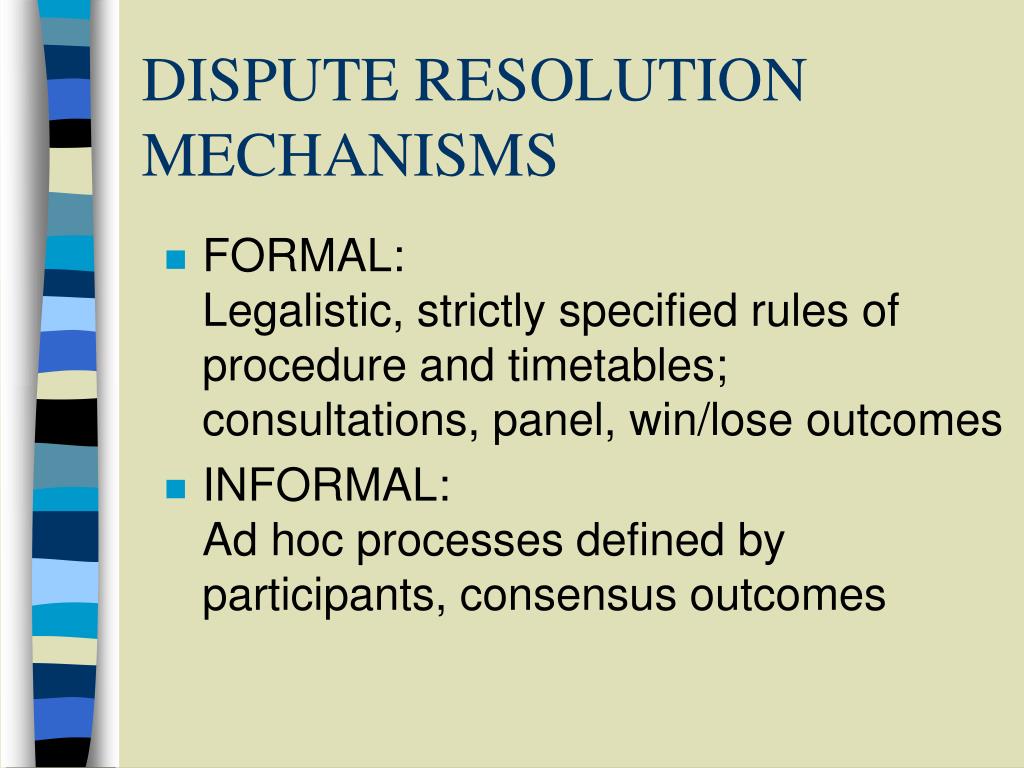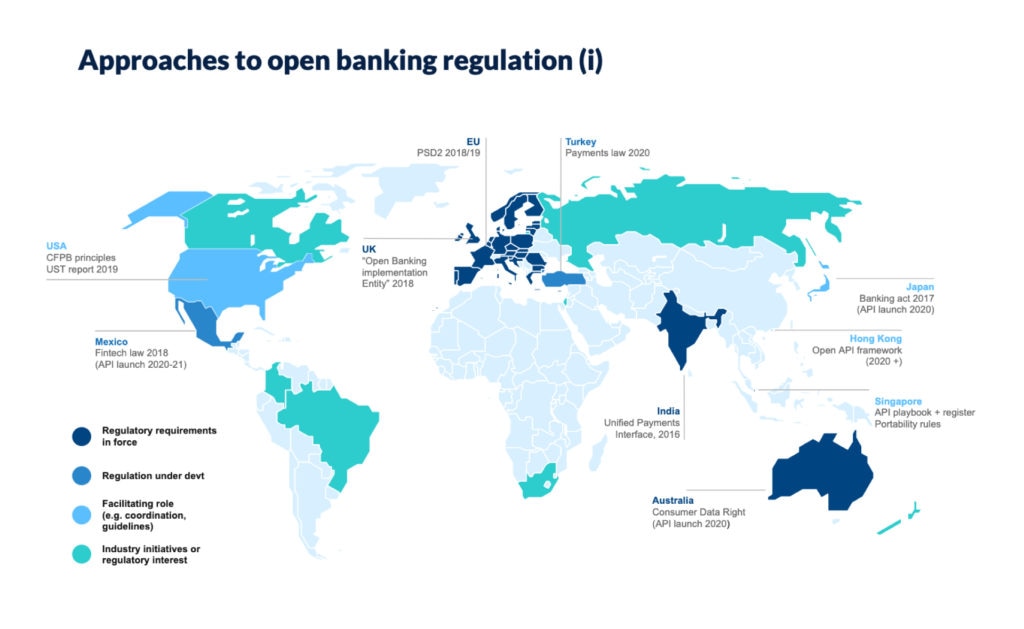
Trade Disputes: Unraveling the Mechanisms for Resolution
International trade is the lifeblood of the global economy, connecting countries, businesses, and consumers worldwide. It allows nations to specialize in what they do best, import what they need, and foster economic growth. However, just like in any complex relationship, disagreements can arise. These disagreements, when they involve countries and their trade practices, are known as trade disputes.
Imagine a world where every trade disagreement escalated into a full-blown "trade war" – where countries constantly retaliated with higher tariffs and restrictions, stifling global commerce. It would be chaotic, unpredictable, and devastating for economies. This is precisely why mechanisms for resolving trade disputes are not just helpful, but absolutely essential. They act as referees, mediators, and judges, ensuring that trade remains fair, predictable, and beneficial for all.
This comprehensive guide will break down what trade disputes are, why their resolution is so important, and explore the various mechanisms – from the mighty World Trade Organization (WTO) to bilateral agreements and alternative dispute resolution methods – that help keep the global trading system running smoothly.
What Exactly Are Trade Disputes?
At its core, a trade dispute is a disagreement between two or more countries over their trade policies or practices. These disputes usually arise when one country believes that another country’s actions are violating an international trade agreement or are unfairly harming its industries.
Think of it like this: countries agree to play by certain rules when trading with each other, often laid out in treaties. A dispute happens when one country feels another isn’t following those rules, or is breaking the spirit of fair trade.
Common Causes of Trade Disputes:
- Tariffs and Quotas: A country might impose excessively high taxes (tariffs) on imported goods or limit the quantity (quotas) of certain products coming in, making it hard for foreign competitors.
- Subsidies: Governments sometimes give financial aid (subsidies) to their domestic industries, which can give them an unfair advantage over foreign competitors in the global market. For example, a government might subsidize its steel industry, allowing it to sell steel more cheaply than foreign producers.
- Anti-Dumping Measures: "Dumping" occurs when a company exports a product at a price lower than its normal price in its own domestic market, or even below its production cost. Countries can impose "anti-dumping duties" to counteract this, which can then become a source of dispute if the exporting country feels the duties are unfair.
- Technical Barriers to Trade (TBTs): These are regulations, standards, testing, and certification procedures that can act as barriers to trade. For instance, if a country sets a unique safety standard for imported electronics that differs significantly from international norms, it might be seen as a disguised form of protectionism.
- Sanitary and Phytosanitary (SPS) Measures: These are rules to protect human, animal, or plant life or health from risks arising from food additives, contaminants, toxins, disease-carrying organisms, etc. Disputes can arise if one country believes another’s SPS measures are overly restrictive and not scientifically justified.
- Intellectual Property Rights (IPR): Disagreements can occur over the protection and enforcement of patents, copyrights, and trademarks, especially when counterfeiting or piracy is rampant.
- Currency Manipulation: While often debated, some countries are accused of deliberately devaluing their currency to make their exports cheaper and imports more expensive, gaining an unfair trade advantage.
Why is Trade Dispute Resolution So Important?
The ability to resolve trade conflicts peacefully and effectively is crucial for several reasons:
- Prevents Trade Wars: Without agreed-upon mechanisms, countries might resort to tit-for-tat retaliations, leading to escalating tariffs and trade barriers that harm all parties involved. This can quickly spiral into a "trade war," hurting businesses, consumers, and global economic stability.
- Maintains Stability and Predictability: Businesses thrive on certainty. Knowing that there’s a system to address grievances provides a stable environment for international trade and investment. It ensures that trade rules are followed and enforced.
- Ensures Fairness and Equity: Resolution mechanisms aim to ensure that trade is conducted on a level playing field, preventing powerful nations from unfairly dominating weaker ones through sheer economic might.
- Upholds the Rule of Law: They reinforce the principle that international trade operates under agreed-upon rules, not just the power of individual nations. This is fundamental to a rules-based global trading system.
- Protects Jobs and Economies: Unresolved trade disputes can lead to job losses in industries affected by unfair trade practices or retaliatory measures. Effective resolution helps protect national industries and economic health.
The World Trade Organization (WTO): The Cornerstone of Global Trade Dispute Resolution
When it comes to resolving international trade disputes, the World Trade Organization (WTO) is undoubtedly the most prominent and powerful institution. Established in 1995 (building on the General Agreement on Tariffs and Trade – GATT), the WTO is the only global international organization dealing with the rules of trade between nations.
The WTO Dispute Settlement Mechanism (DSM): A "Crown Jewel"
The WTO’s Dispute Settlement Understanding (DSU) is often referred to as the "crown jewel" of the multilateral trading system. It provides a structured, rules-based process for countries to resolve their trade disputes peacefully. Unlike traditional diplomacy, the WTO system is quasi-judicial, meaning its decisions are binding on the countries involved.
Key Principles of the WTO DSM:
- Rule-Based, Not Power-Based: Disputes are resolved based on legal interpretations of WTO agreements, not on the relative economic or political power of the countries involved.
- Binding Decisions: Once a ruling is made and adopted, member countries are legally obligated to comply.
- Transparency: The process is relatively open, with reports and decisions made public.
- Focus on Withdrawal of Measures: The primary goal is for the offending country to change its trade measure to bring it into conformity with WTO rules, rather than just imposing penalties.
The WTO Dispute Settlement Process (Simplified Steps):
Imagine a court case, but for countries and trade rules.
-
Consultations (The First Step – Like Trying to Talk It Out):
- When one WTO member (the "complainant") believes another (the "respondent") is violating a trade agreement, the first step is mandatory consultations.
- The complainant requests the respondent to discuss the issue. The goal is to find a mutually agreeable solution without further escalation. This stage often resolves disputes.
- Timeframe: Up to 60 days.
-
Panel Stage (The "Trial" Phase):
- If consultations fail to resolve the dispute, the complainant can request the establishment of a panel.
- A panel typically consists of three independent trade experts who act like judges.
- The panel hears arguments from both sides, examines evidence, and issues an interim report, then a final report.
- The report outlines whether the respondent’s measure violates WTO rules and recommends actions to bring it into compliance.
- Timeframe: Usually 6 to 9 months for the panel process.
-
Appellate Body Review (The "Appeals Court" – Currently Challenged):
- Either party can appeal the panel’s findings on points of law (not facts).
- The Appellate Body (AB), a standing body of seven persons (though its functioning is currently hampered due to blocked appointments by the US), reviews the panel’s legal interpretations.
- Its ruling can uphold, modify, or reverse the panel’s findings.
- Timeframe: Up to 90 days.
- Current Challenge: The WTO’s Appellate Body has been unable to hear new appeals since December 2019 due to a lack of members, effectively paralyzing the final stage of the dispute settlement process. This is a significant challenge for the WTO.
-
Adoption of Report (Becoming Legally Binding):
- The panel or Appellate Body report is then adopted by the WTO’s Dispute Settlement Body (DSB), making its findings legally binding.
- This adoption is usually automatic unless all members decide against it (a rare occurrence).
-
Implementation of Recommendations (Complying with the Ruling):
- The losing country is expected to implement the recommendations and bring its measure into conformity with WTO rules.
- They are given a "reasonable period of time" to do so.
-
Compensation or Retaliation (Last Resort):
- If the losing country fails to implement the recommendations within the agreed timeframe, the complaining country can negotiate for compensation (e.g., lower tariffs on other products).
- If compensation isn’t agreed upon, the complaining country can request authorization from the DSB to impose retaliatory measures (e.g., higher tariffs on imports from the non-compliant country), but only to a level equivalent to the harm suffered. This is the last resort and is carefully calculated to avoid escalating into a full trade war.
The WTO’s DSM has been incredibly successful in de-escalating conflicts and enforcing trade rules for decades, providing a vital safety valve for the global economy, despite its current challenges.
Other Mechanisms for Trade Dispute Resolution
While the WTO is the primary global forum, many other important mechanisms exist for resolving trade disputes, often more tailored to specific relationships or situations.
A. Bilateral and Regional Trade Agreements (FTAs)
Beyond the global WTO rules, countries often sign Free Trade Agreements (FTAs) or form regional economic blocs (like the European Union, NAFTA/USMCA, ASEAN, etc.). These agreements typically include their own detailed dispute resolution chapters designed to address disagreements that arise specifically under the terms of that particular agreement.
-
Examples:
- USMCA (United States-Mexico-Canada Agreement): Replaced NAFTA and includes a robust dispute settlement mechanism for issues arising between the three North American countries.
- European Union (EU): Has its own sophisticated legal system and courts (like the European Court of Justice) to resolve disputes among member states concerning EU law, including trade.
- ASEAN (Association of Southeast Asian Nations): Member states have agreed on mechanisms for resolving trade and economic disputes within the bloc.
-
Advantages:
- Can be faster and more flexible than WTO processes.
- Tailored to the specific needs and relationships of the signatory countries.
- Often include mechanisms for specific sectors or issues (e.g., investment disputes).
-
Disadvantages:
- Scope is limited to the parties of the agreement.
- May lack the enforceability or global legitimacy of WTO rulings.
B. Alternative Dispute Resolution (ADR) Methods
Outside of formal legal structures, countries (or even companies involved in international trade) can use various Alternative Dispute Resolution (ADR) methods. These are often preferred for their flexibility, confidentiality, and ability to preserve relationships.
-
Negotiation:
- Description: The most direct and common method. Countries directly engage in discussions to find a mutually acceptable solution without the involvement of a third party.
- When Used: Always the first step, often before any formal dispute settlement process (including WTO consultations). It’s ongoing diplomacy.
- Advantage: Allows for creative, win-win solutions and preserves diplomatic ties.
- Disadvantage: Depends entirely on the willingness of both parties to compromise.
-
Mediation:
- Description: A neutral third party (the mediator) facilitates discussions between the disputing countries. The mediator does not make a decision but helps the parties explore options, clarify issues, and reach their own agreement.
- When Used: When direct negotiations are stalled, or communication has broken down.
- Advantage: Non-binding, confidential, and helps maintain relationships. Can be very effective in finding common ground.
- Disadvantage: The mediator’s suggestions are not legally enforceable.
-
Conciliation:
- Description: Similar to mediation, but the conciliator often takes a more active role in suggesting potential solutions or terms of settlement. While still non-binding, it’s a step closer to a recommended outcome.
- When Used: When parties need more guidance than a pure mediator provides, but still want to retain control over the final decision.
- Advantage: Can offer more concrete pathways to resolution than pure mediation.
- Disadvantage: Still non-binding.
-
Arbitration:
- Description: Disputing countries agree to submit their dispute to a neutral third party (or panel of arbitrators) for a binding decision. Unlike a mediator, the arbitrator acts like a private judge and issues an award that the parties have agreed to accept as final.
- When Used: Often used for specific investment disputes between a foreign investor and a host country, or within certain trade agreements.
- Advantage: Provides a definitive, binding resolution; often faster and more confidential than traditional court litigation.
- Disadvantage: Less flexible once the process begins; can be costly.
Challenges and the Future of Trade Dispute Resolution
Despite the established mechanisms, the landscape of global trade disputes is constantly evolving, presenting new challenges:
- The WTO Appellate Body Crisis: As mentioned, the paralysis of the WTO’s Appellate Body is a major concern. Without a functioning appeals process, the finality and enforceability of WTO rulings are undermined, pushing countries to seek solutions outside the system or to simply ignore panel reports.
- Rise of Protectionism and Unilateralism: A growing trend of countries prioritizing domestic industries through tariffs and other barriers, sometimes acting outside established rules, strains the existing dispute resolution frameworks.
- Complexity of Modern Trade: Disputes are becoming more complex, involving issues like digital trade, climate-related trade measures, labor standards, and state-owned enterprises, which existing agreements may not fully cover.
- Geopolitical Tensions: Broader geopolitical rivalries can complicate trade disputes, making them harder to resolve purely on economic or legal grounds.
The future of trade dispute resolution will likely involve a combination of efforts:
- Reforming and strengthening the WTO’s DSM, particularly addressing the Appellate Body issue.
- Developing more robust and comprehensive dispute settlement chapters in new bilateral and regional trade agreements.
- Increased reliance on flexible ADR methods for specific issues.
- Adapting trade rules to address the challenges of the 21st-century global economy.
Conclusion
Trade disputes are an inevitable part of international commerce. They arise from differing national interests, interpretations of rules, or perceived unfair practices. However, the existence of robust and varied mechanisms for resolution is what prevents these disagreements from spiraling into destructive trade wars.
From the comprehensive, rules-based system of the World Trade Organization to the tailored approaches of bilateral agreements and the flexible options of negotiation, mediation, and arbitration, these mechanisms are the unsung heroes of the global economy. They provide the necessary framework for countries to air grievances, seek justice, and ultimately, find common ground. While challenges remain, the ongoing commitment to a rules-based system and the continuous evolution of dispute resolution tools are vital for ensuring a fair, stable, and prosperous future for global trade. Understanding these mechanisms is the first step in appreciating the intricate dance of international economics.



Post Comment